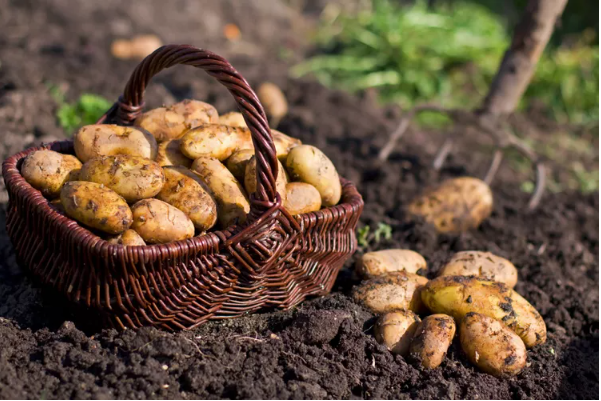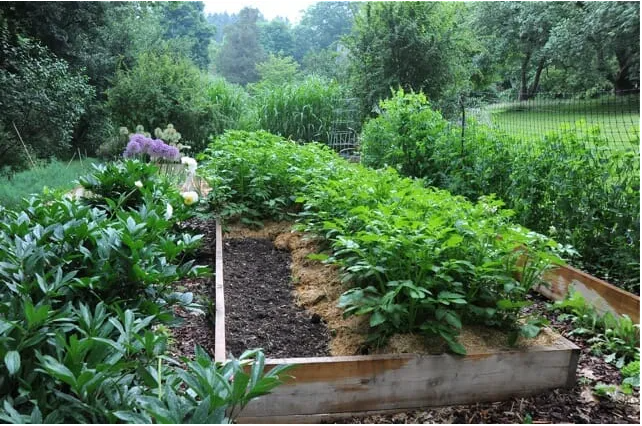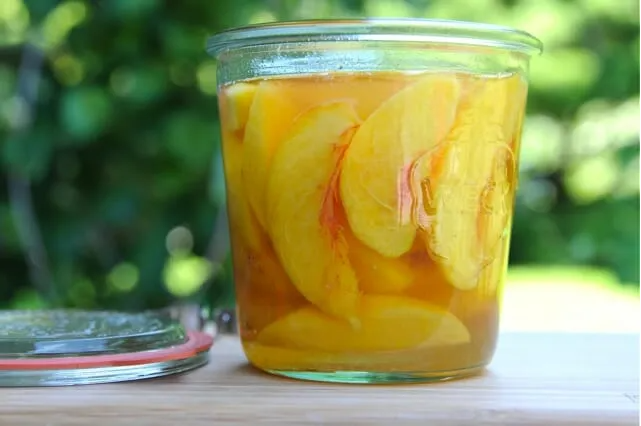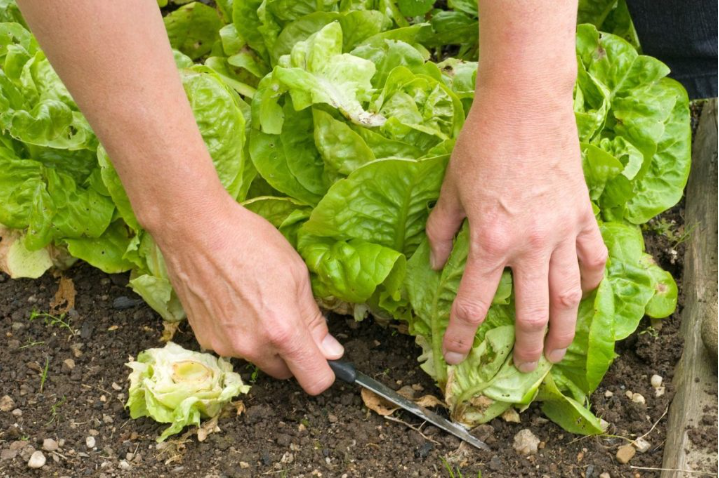If you are a farmer and have land, you may change your crop every season. If you are thinking about planting potatoes, this is the correct spot to learn everything.
Planting Potatoes – Quick Intro
We don’t need any intro to potatoes. Everyone loves to eat them, and we include them in every food. But, since you are looking to plant them, things are changing. If you are a first-time gardener, potatoes are the best choice. Potatoes are the easiest to plant vegetables and aren’t messy. It will take a little effort to grow them. Unlike most plants, they don’t need unique soil to grow. Thus, I am giving you the best reward for your hard work and efforts.
Planting Potatoes – The Climate
Before deciding to plant a seed, we must get all the details about its climate. Your crop heavily depends on the environment before anything else. Potatoes are cool-weather crops. If you are living in the US, you will find most potato plants in the northern region. But if you are living in a warmer area, you can also plant them as a winter crop. However, these plants have a strong relationship with eggplant, tomatoes, and peppers. Yet they are accustomed to complex conditions. Thus, making it easy to grow plants against their related types.
For the American audience, the vegetable was not available in the US territory before 1621. It was the first time it was given to the Governor of Virginia by the governor of Bermuda as a gift.
Planting Potatoes – Helpful Info
Before jumping to the “how to plan potatoes” part, let’s look at helpful info about potatoes. Potatoes have an edible part underneath the ground. The part above the ground has leaves and a stem.
The stem of the plant grows the stolon after seven to eight weeks of plantation. The stolon part of the plant is six to eight inches tall. We don’t even need to share the plant’s nutrient factor. Experts suggest not to remove the skin of the potatoes while eating. Potatoes with skin give 45% of Vitamin C of your daily intake. Along with other nutrients, Potatoes also have 18 % Potassium.
Even though potatoes are available in only a select few varieties in the store, if you are planting potatoes, you need to go into further details. There are more than 100 types of potatoes. Each variety has its taste, color, and quality. Even the skin color of the vegetable changes its quality from the other type. One type is ideal for mashing, while the other is a little firm. Some varieties are ideal for boiling, and others are best for salad.
Planting Potatoes – The Pre-planting Stage
The pre-planting stage is essential for the best results in every crop. We can say the same thing for potatoes as well. The potatoes that you can use for planting are known as seed potatoes. These seeds are available in the supermarket or a grocery store. Shopkeepers sell them in net bags. The ideal weather for planting the seeds is during the spring. Select a time of three or four weeks before the last frost. Your location for growing the potatoes is the most vital factor in the whole exercise. The soil that you select for planting should be loose and fertile.
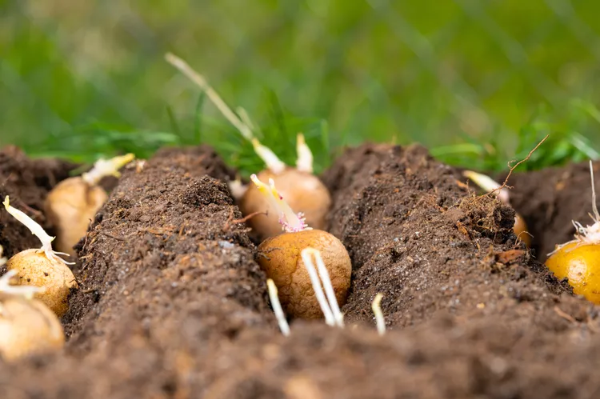
how to grow potatoes
Further, the place should get direct sunlight for at least 6 hours. If the soil is compact and rigid, it will negatively affect the crop’s quality. A soil temperature of 45 to 55 Fahrenheit is ideal for potatoes. However, keep mixing organic materials in the soil during the fall season.
Planting Potatoes – Planting Time
Now that we have gone through all the planning and arrangements for planting, we’ll need to decide a time. We know the ideal time for planting potatoes is spring season, which is two to four weeks before the last frost. The condition and temperature of your soil also matter the most. New farmers tend to keep an eye on the calendar for planting potatoes. However, the timing of planting the seeds is secondary to the soil conditions. Ensure that your soil is not wet enough so that it becomes sticky. The soil is hard to work with in a sticky condition for plantation.
If you need more experience to learn about soil conditions, get help. These days, you can use social media for some advice as well. As you decide about soil, let it dry out to get in a better condition.
The temperature of your area is also a deciding factor in the plantation timing. Suppose the spring season is wet in your area; you can delay planting potatoes till April. But if planting potatoes in containers is the primary target, planting time can also be June.
For the US audience, planting time is different. Farmers who live in cooler regions should target mid-April for plantation. However, the dates vary in warmer areas from September to February. For those who live in Florida, plant your potatoes in January, While Georgia Farmers are targeting February.
How to plant Potatoes
Till this point, we have covered the pre-planting situations. Further, the timing and climate conditions are also evident as a day for potato planting. Let’s move to the primary part and plant some potatoes. Seed potatoes are readily available in the market. Make sure that you are getting certified seed. Certified seeds are disease-resistant, so having them before wasting all your efforts is better. Also, check that the seed potatoes have an extended bud. This quality makes them the best for planting.
It is vital to mention that new farmers confuse seed potatoes with potato seeds in the grocery market. We must ask the store manager for Seeds for the plantation. As you get the seed, the first step of planting will commence. Open the bag and free the Seed potatoes. It is better to lay the seed in a tray or an egg container. The first step is known as Chitting. Although the farmers don’t recommend this step, Chitting makes the Potato planting procedure easier. After laying the potatoes in an egg container, please keep them in a bright place. This way, they will Sprout. The whole procedure makes the seed ready for under-the-soil work. Chitting makes the Seed potatoes itchy enough to produce roots under the soil.

planting potatoes
The Chitting process takes around a month to complete. After a month, you will notice green Sprouts on the potatoes. Our primary goal is to get these sprouts on the seed potatoes. We need to be careful while getting the Sprouts, as they can go either way. If we wait a little longer, Sprouts can turn pale and long if we leave them in the dark. You can also grow the potatoes if you never get a chance to Chime them.
Planting Potatoes – Hacks and Tips
Now, you will face a situation where you need more Seed potatoes. Budget, resources, or supplies can be one of the reasons behind Seed shortage. This isn’t a time to worry, as we can use an easy hack to get more seed Potatoes. Check if your Seed potatoes have enough dimples on them. These dimples or eyes are the spots from where the Sprout emerges during the Chitting process. If you have more than enough eyes on the potatoes, cut them in half to get an extra seed. After cutting the Potatoes, put them in the soil with Sprouts facing the sky. This way, you can get the best crop.
We must consider a few vitals as we cut the potatoes in half points. If your Seed potatoes are smaller than a hen’s egg, don’t cut them in half. Instead, put those small potatoes under the soil. When you plan to start planting, cut the Seed potatoes two days earlier than that date. This way, the half-cut potatoes can create a protective layer on their surface, which can create resistance for the plantation.
In the end, we must prepare the soil for planting potatoes. Use organic material and spread it at a depth of 3 inches on the soil. We are adding this extra layer of organic material to help the plant grow. Potatoes are hungry plants, so they need this nourishment to be healthy and fertile.
Methods of Planting
We have covered all the tracks to this point. Now, let’s analyze different methods of planting Seed potatoes.
Dig Holes
This method is the traditional and old-school method of planting. It may be old, but it is a very profitable method. We need to dig a hole for every Seed potato. Each hole must be 6 inches in depth. Now, add the organic material from earlier in a small quantity in the hole. Now, add the potato to the hole by ensuring the sprouts face upwards and cover the soil. The space between two potatoes under the soil differs according to the type of seed potatoes. Keep the space 16 inches in both directions for an early-type Seed. But for maincrop Potatoes, the space will be a little more expensive. The maincrop potatoes need a little more space on both sides, so keep them 18 inches apart.
Shaped Trenches
This method is a modern method of planting potatoes. In this method, we dig a 75-inch trench. Now, lay the organic material along the bottom. Put the Seed plant in the hole by keeping a foot. Fill the hole again and cover it up with soil. It doesn’t matter which digging method suits you the best; you can get the best results with care for the plant. However, if you think about planting sweet potatoes, methods get slightly different.
More info: How to Build the Perfect Bluebird House a Detailed Guide
Planting Potatoes in Containers
Don’t be disappointed if you don’t have enough space in your backyard and are passionate about planting potatoes. You can think about Planting Potatoes in Containers. Put 4 inches of potting mix at the bottom of your container. Now, add a couple of Seed potatoes and cover them. As you observe a little growth, include more potting mix and repeat the process. Give these two potatoes a few times, and you can add more potting mix till you reach the top of the container.
Growing the Potatoes
Your task isn’t over until the day you eat those Potatoes. Now is the time to help those potatoes grow. They won’t help themselves. There are a few vital steps while your plants are growing.
Watering
The most essential part of taking care of the plants is watering them. Potatoes are healthy and lush plants. Their stems take a lot of effort to grow and swell. After you observe flowers blooming on their leaves, keep a balance of moisture in the plants. If your plant is dry, water thoroughly. Understanding the exact water balance for the Potato plant will take a while. Extra watering can also negatively affect the plant. At the same time, less water is harmful to your plant. If we ask the experts, they believe 2 inches of water a week is enough for potatoes. However, this quantity can change depending on your climate and temperature. Also, when you are planting potatoes in a container, they need extra attention and care. Try to water them frequently to keep moisture.
Hilling
Hilling is a unique and different procedure that you need to follow while growing potatoes. As the potato plant grows out of the soil, it also affects the seed’s placement in the soil. The depth of the Seed potato is directly proportional to its health. The maximum depth will ensure the health of the plant. After a while, you must mound the soil and fill the plant. So, only the top leaves are out of the ground. It would help if you did not allow the Spuds to grow out of the soil. Sunlight exposure will produce a green color and a chemical on the Spuds. This chemical results in a bitter taste of the potato. Thus, leaving a bad impression on your tastebuds.

